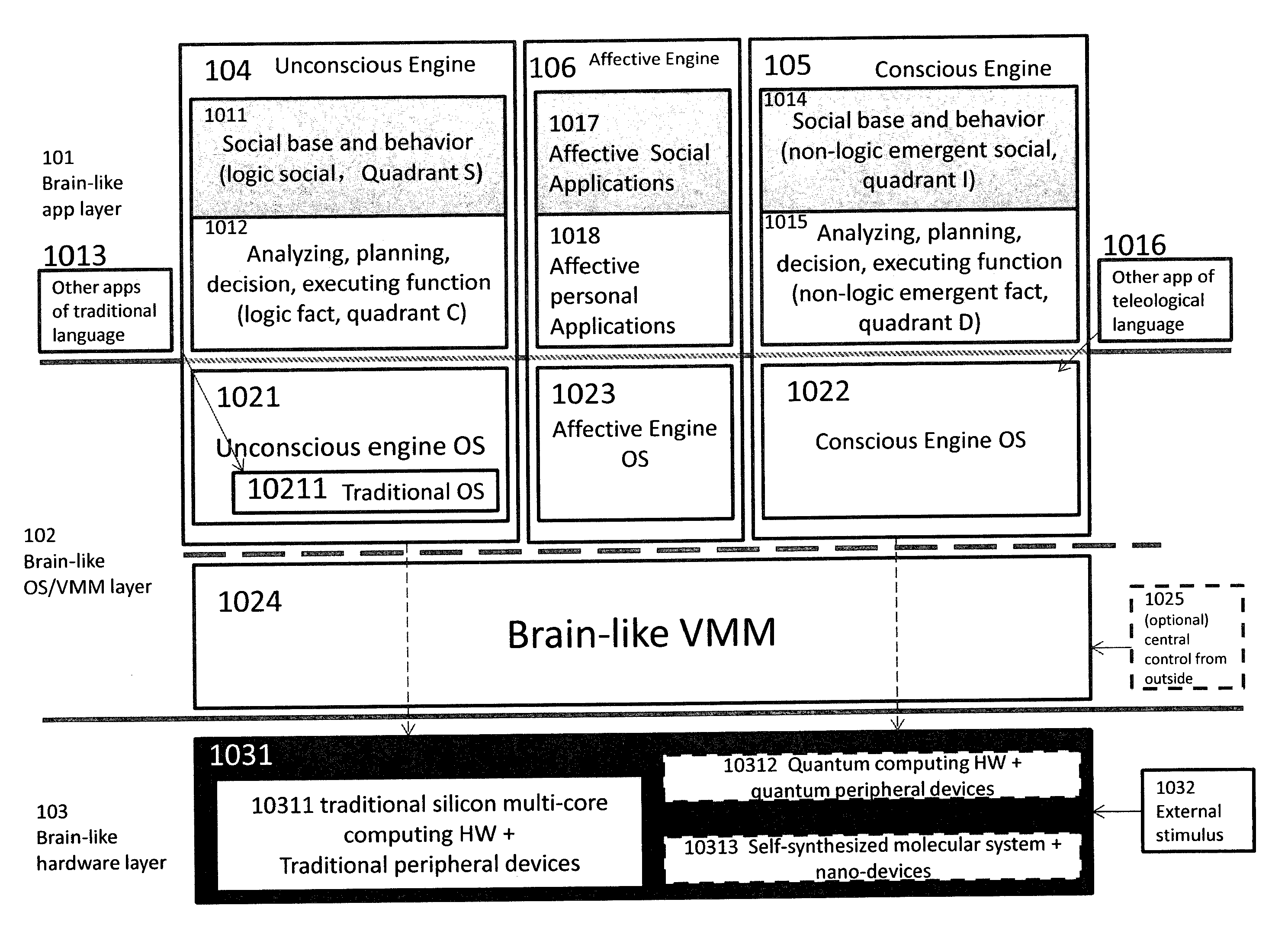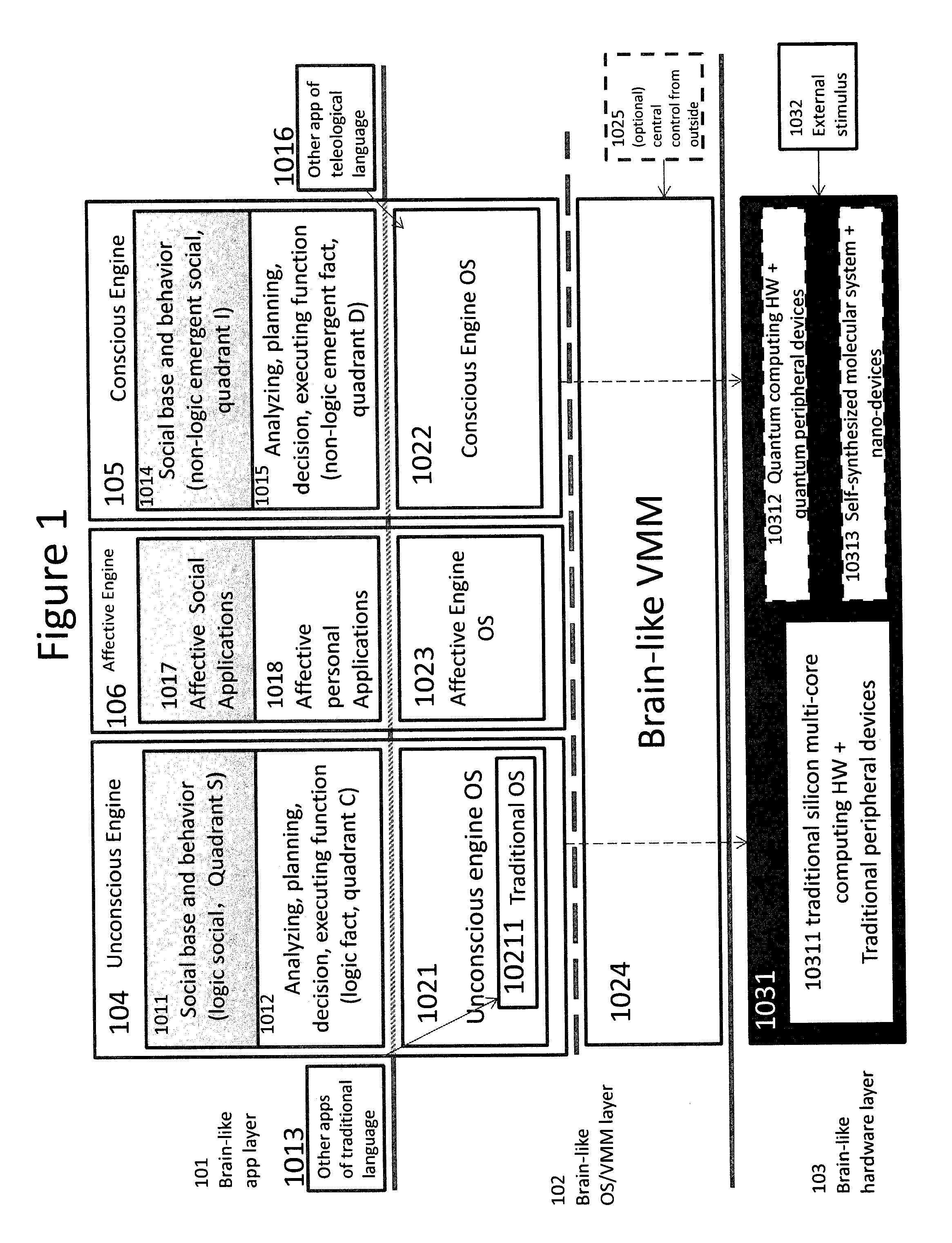Methods and systems of brain-like computing virtualization
a brain-like computing and virtualization technology, applied in computing models, biological models, instruments, etc., can solve problems such as system crash, traditional expert systems are unable to self-organize and output engineering designs, and are unable to generate intelligen
- Summary
- Abstract
- Description
- Claims
- Application Information
AI Technical Summary
Benefits of technology
Problems solved by technology
Method used
Image
Examples
Embodiment Construction
[0059]The disclosed invention can be divided into method invention and system invention as in the following table:
PrimarySecondaryInvention ContentsBL computingFoundation method(FIG. 1, 2) Use Cyclic method to generate BCEvirtualizationnode for BCN, including (FIG. 3-8, 10-13) BL VMMmethodsand BL engine: unconscious engine, consciousengine and affective engineQuantum gate method(FIG. 9A) Quantum Gate model for BL EmulatorQuantum Adiabatic (FIG. 9B) Quantum Adiabatic model for BLmethodEmulatorBL Computing virtualization Systems(FIG. 15) BL Autonomic computing system(FIG. 16) BL performance service system formulti-core computer cluster(FIG. 17) BL software development and servicedelivery system(FIG. 18) BL disaster recovery system
[0060]BL Computing Horizontal and Vertical Architecture
[0061]FIG. 1 is a BL computing horizontal and vertical architecture block diagram of an embodiment based on the disclosed invention. The horizontal architecture includes three layers: 102 BLNMM layer, 101...
PUM
 Login to View More
Login to View More Abstract
Description
Claims
Application Information
 Login to View More
Login to View More - R&D
- Intellectual Property
- Life Sciences
- Materials
- Tech Scout
- Unparalleled Data Quality
- Higher Quality Content
- 60% Fewer Hallucinations
Browse by: Latest US Patents, China's latest patents, Technical Efficacy Thesaurus, Application Domain, Technology Topic, Popular Technical Reports.
© 2025 PatSnap. All rights reserved.Legal|Privacy policy|Modern Slavery Act Transparency Statement|Sitemap|About US| Contact US: help@patsnap.com



